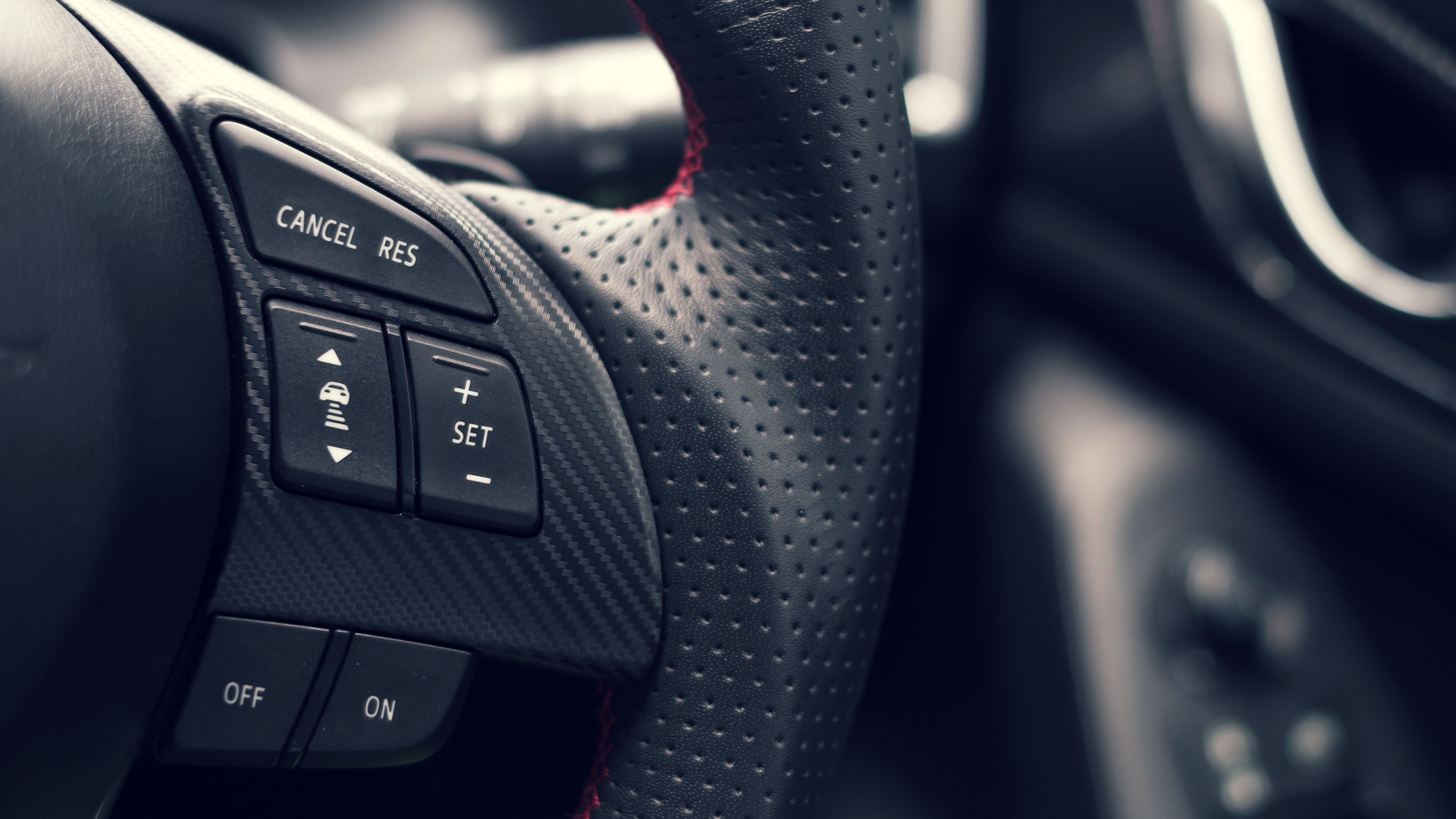Feature article
What is adaptive cruise control?
In this article, we explain exactly what adaptive cruise control is and how it helps keep you safe on the road.
Adaptive cruise control (ACC), also known as Dynamic cruise control, is one of the key automated driving systems. ACC does the same job as standard cruise control, but also automatically adjusts your vehicle speed to stay at a safe distance from the car in front.
Where’d it come from?
Back in 1999, Mercedes-Benz was the first car brand to sell a vehicle fitted with ACC – the S-Class. At that time there was no steering assist, but the car automatically kept pace with the one in front – slowing, speeding up, and even pulling to a stop at the lights. ACC has since been introduced by vast numbers of other manufacturers and is an increasingly popular feature in modern vehicles.
How does ACC differ from standard cruise control?
- Standard cruise control, you set the speed you want to travel at and if you get closer to a vehicle in front than you’re comfortable with, you can still depress the brake – cruise control is then cancelled, and you control the car’s speed with the accelerator pedal until you’re ready to switch cruise control back on.
- Adaptive cruise control, you set the maximum speed you want to travel at and the following distance, using a dial or three-position selection. Your vehicle will travel at the set speed, unless you catch up to another car – then it’ll slow down and maintain your selected following distance, before speeding up to your chosen max speed when the road ahead is clear.
Is it a simple procedure?
At a basic level, yes. Your car will scan ahead using either a front-mounted radar or laser (similar to police laser speed detectors), and use your car’s computer – which already controls stuff like electronic stability control and ABS brakes – to calculate the distance between you and potential obstacles.
If an obstacle is detected, the car computer modifies the throttle, engine management and, if necessary, brakes and gear-changes – just as it does if engaging stability control. If you approach the car ahead rapidly, your car may alert you via flashing lights or even audio alarms.
What does the future hold?
The most modern versions of ACC use the car GPS, and several car companies are developing systems whereby vehicles automatically talk to each other by radio signal to fine-tune the ACC.
The potential downside to this incoming tech is that you’re trusting the driver in front to do the right thing and make no sudden changes of direction. You’ll still need to pay attention. For instance: if there’s a sharp bend ahead, the car in front will leave your car’s radar field – this could lead your car’s systems to calculate that the road ahead is clear and safe to accelerate into, when it isn’t.
Other articles you might like

